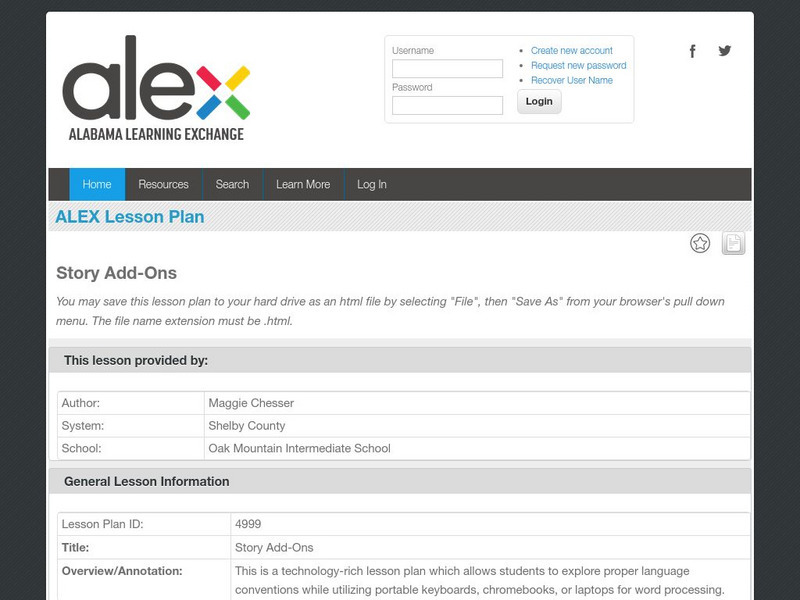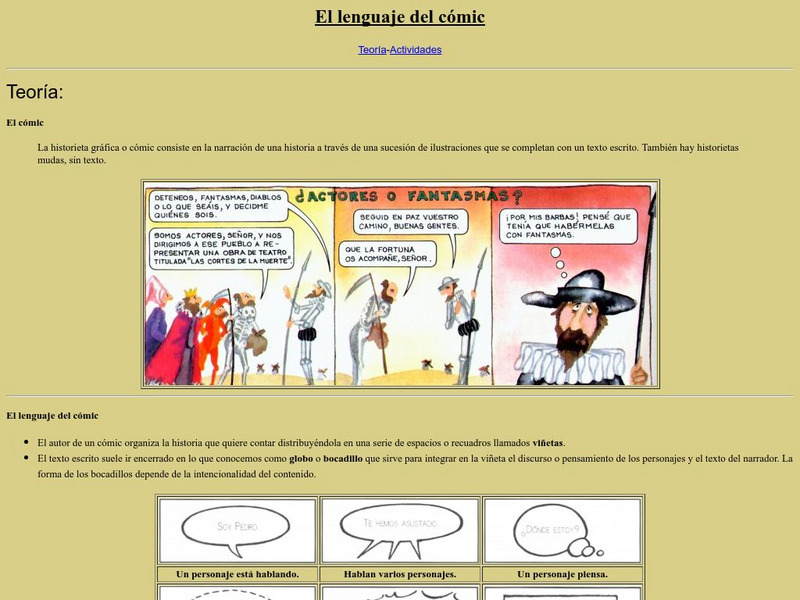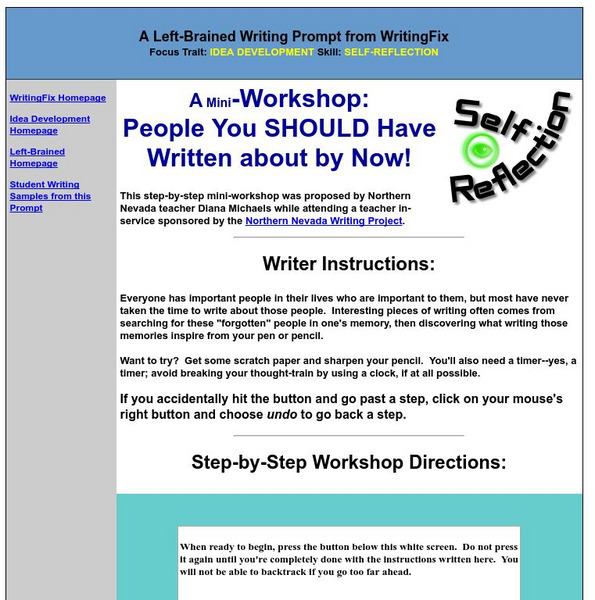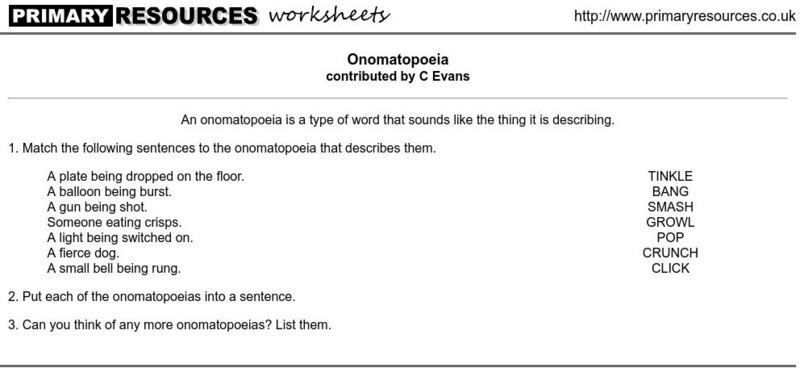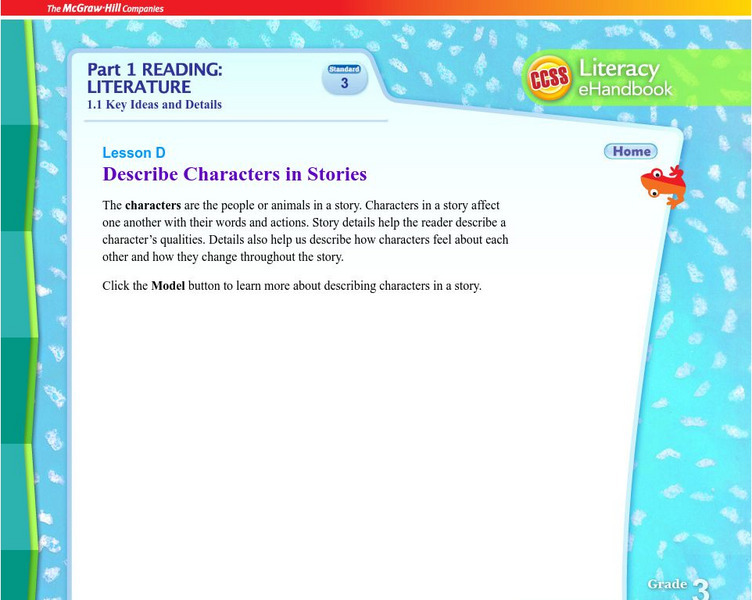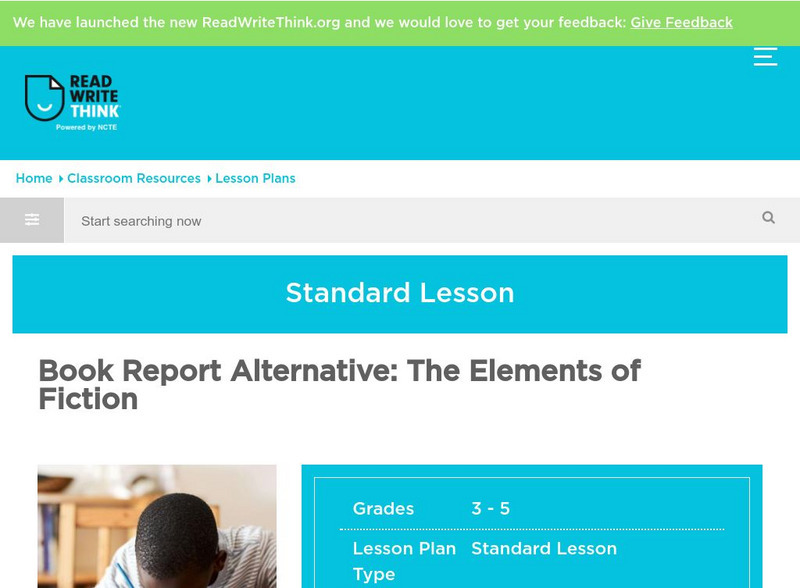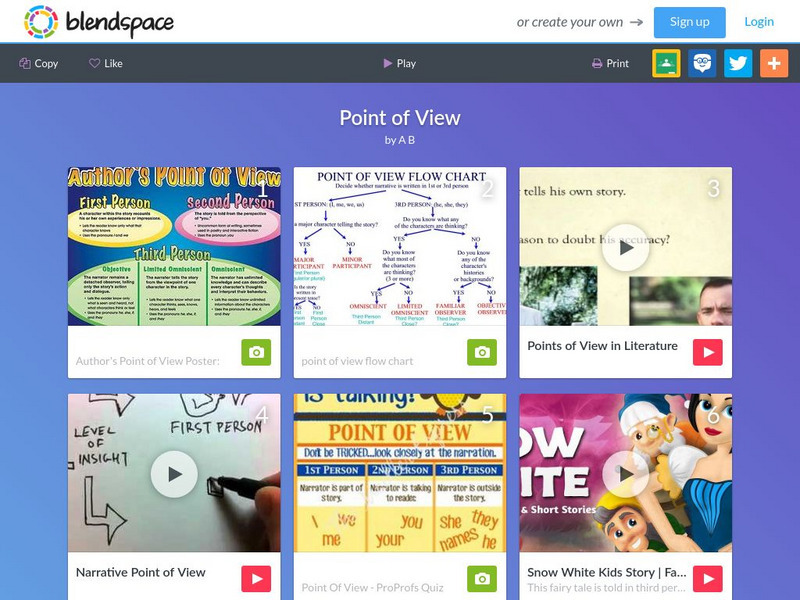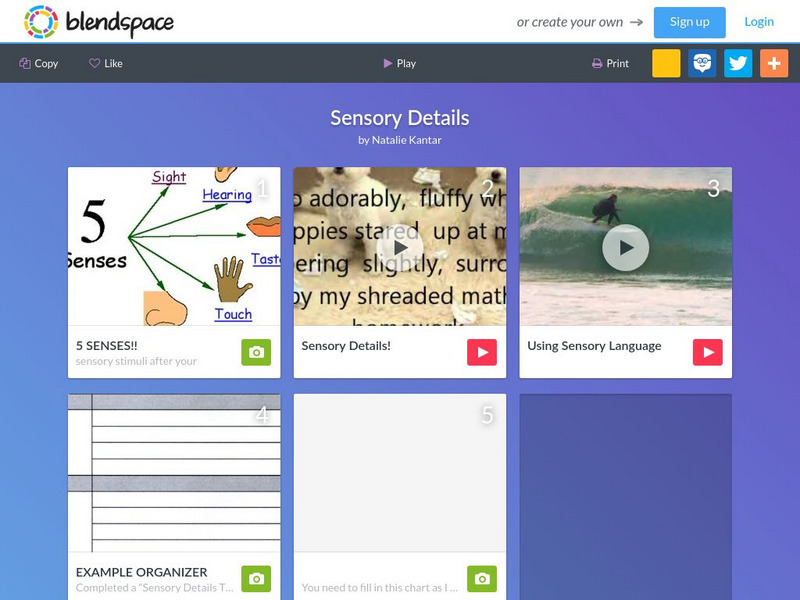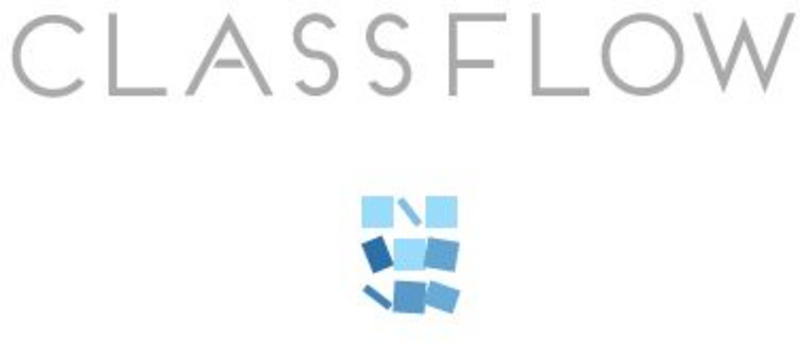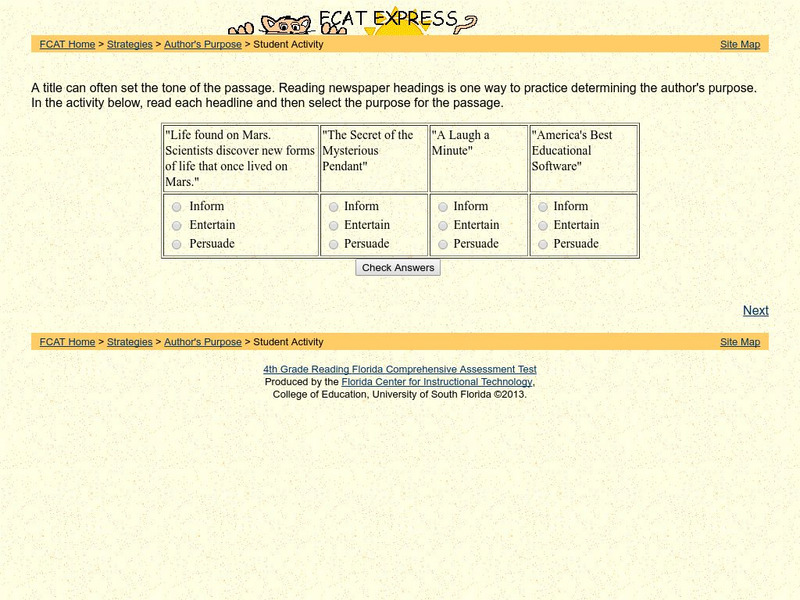South Carolina Educational Television
Know It All: Writing Letters
The students will learn how to form a proper letter. They will be able to remove key ideas/details from a text and apply it to their writing. They will also be able to incorporate transition and descriptive words into their writing.
South Carolina Educational Television
Know It All: Imagine Imagery
Third graders will dive into the word "imagery," learning what it means and using what they learn to describe a color using all 5 senses.
Alabama Learning Exchange
Alex: Story Add Ons
This is a technology-rich lesson plan which allows students to explore proper language conventions while utilizing portable keyboards for word processing.
PBS
Pbs Learning Media: Arthur: Collection
This collection foster students' interest in reading and writing, and encourage positive social skills with this collection of classroom resources from ARTHUR. Aimed at children between the ages of four and eight, these resources feature...
Scholastic
Scholastic: Teaching Tools: 6 Steps to Helping Students Set Strong Reading Goals
This site offers six steps to helping students set strong reading goals. It all starts with inspiring your students to think about who they are as readers.
Louisiana Department of Education
Louisiana Doe: Louisiana Believes: Guide for Determining Text Complexity
An educator's guide to help determine the level of text complexity.
Ministerio de Educacion, Cultura y Deporte (Spain)
Roble: El Lenguaje Del Comic
This is an approach to different techniques of animation to reading and writing from a playful creative point of view.
Writing Fix
Writing Fix: Left Brained Writing Prompt: Mini Worshop: People to Write About
In this mini-workshop, students are provided step-by-step instructions for writing about important people in their lives that they have not yet written about. Click the instructions button when you are ready to begin.
Primary Resources
Gareth Pitchford's Primary Resources: Onomatopoeia
Simple examples of the literary technique onomatopoeia with two exercises.
Curated OER
Mac Millan: Describe Characters in Stories
This learning module focuses on characters in stories including their actions, changes in character behaviors, and describing character traits. It includes an example passage with questions and answers and a practice passage with questions.
ReadWriteThink
Read Write Think: Book Report Alternative: The Elements of Fiction
Analyzing a book takes the form of creating their own when students complete this activity. The stated goal is to help students "Read like writers." Includes link to a template for student use.
Quia
Quia: Point of View Jeopardy
Practice identifying first and third person point of view in this Jeopardy style learning game.
Other
Wilsonplays: Elements of Fiction
A chart that lists and defines the elements of a story including: character, setting, events, problem, and solution.
Quia
Quia: Point of View Quiz
This interactive activity assesses students' understanding of point of view. Students will read five brief narrative passages; after reading each passage, students will identify the point of view.
Teachnology
Teachnology: Lesson Plan: Point of View
In this lesson, students compare/contrast two versions of "The Three Little Pigs" including the traditional from the pigs' point of view and "The True Story of the Three Little Pigs" by Jon Scieszka and Lane Smith version as told from...
TES Global
Blendspace: Point of View
A learning module with six links to videos and charts that demonstrate first, second, third limited, and third omniscient points of view.
TES Global
Blendspace: Sensory Details
A five-part learning module with links to images and videos about sensory details and using sensory language.
TES Global
Blendspace: Point of View
A fifteen-part learning module with links to images, web sites, videos, and texts about first and third person point of view.
Tom Richey
Slide Share: Point of View Instruction
A slide show with twelve slides explaining and giving examples of first, second, and third person point of view.
Annenberg Foundation
Annenberg Learner: Interactives: Elements of a Story: Characters
The interactive story lesson engages students in the study of "characters" and terms associated with them. Using the story of Cinderella as an anchor story, students will identify the following: hero, villain, protagonist, antagonist,...
ClassFlow
Class Flow: Character Analysis
[Free Registration/Login Required] This elementary flipchart uses examples from children's literature to explore character. It includes writing activities and challenges children to think from the character's point of view.
Washington State University
Washington State University: Allusion/illusion
A brief definition of allusion with examples. Differentiates between the term allusion and the term illusion.
University of South Florida
Fcat Express: Author's Purpose: Student Activity
An online learning activity where students read four titles and choose what the author's purpose for each text would be: to inform, to entertain, or to persuade.
Quizlet
Quizlet: Story Elements Test
Answer fill in the blank, multiple choice, and true/false questions about story elements in this ten-question assessment.



